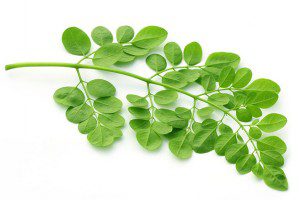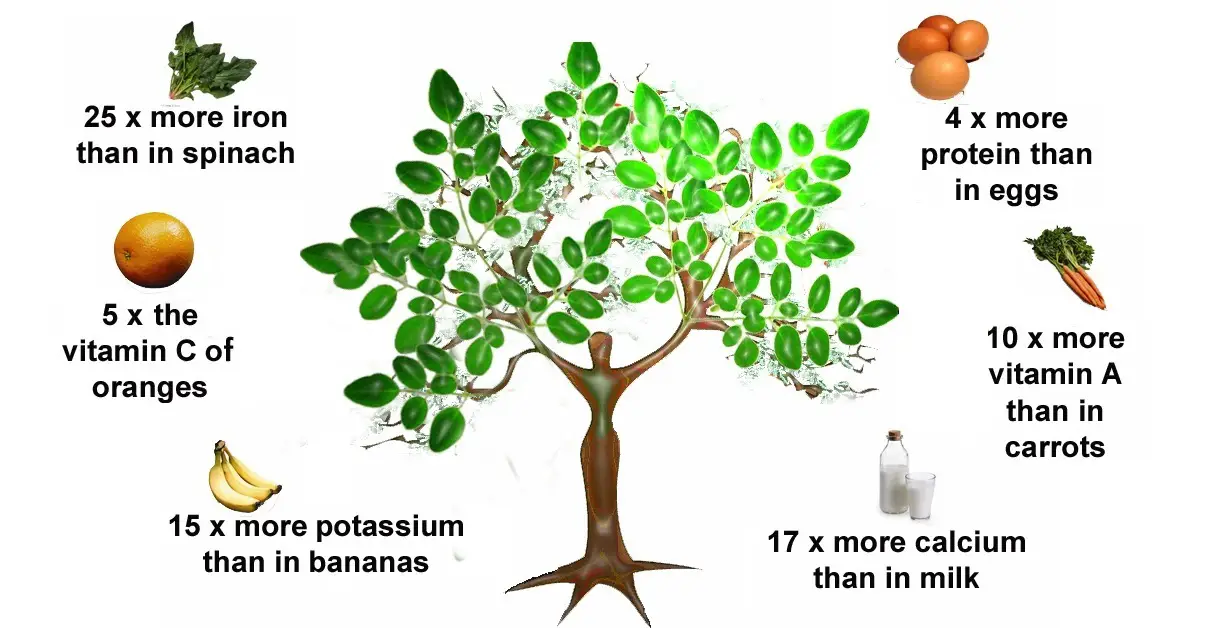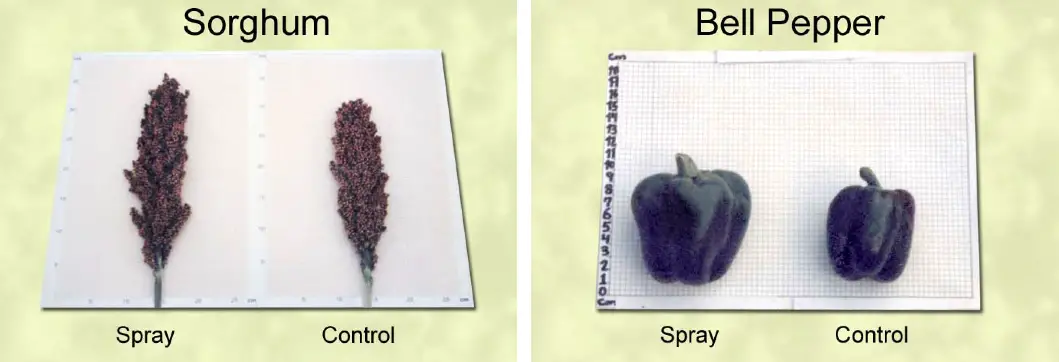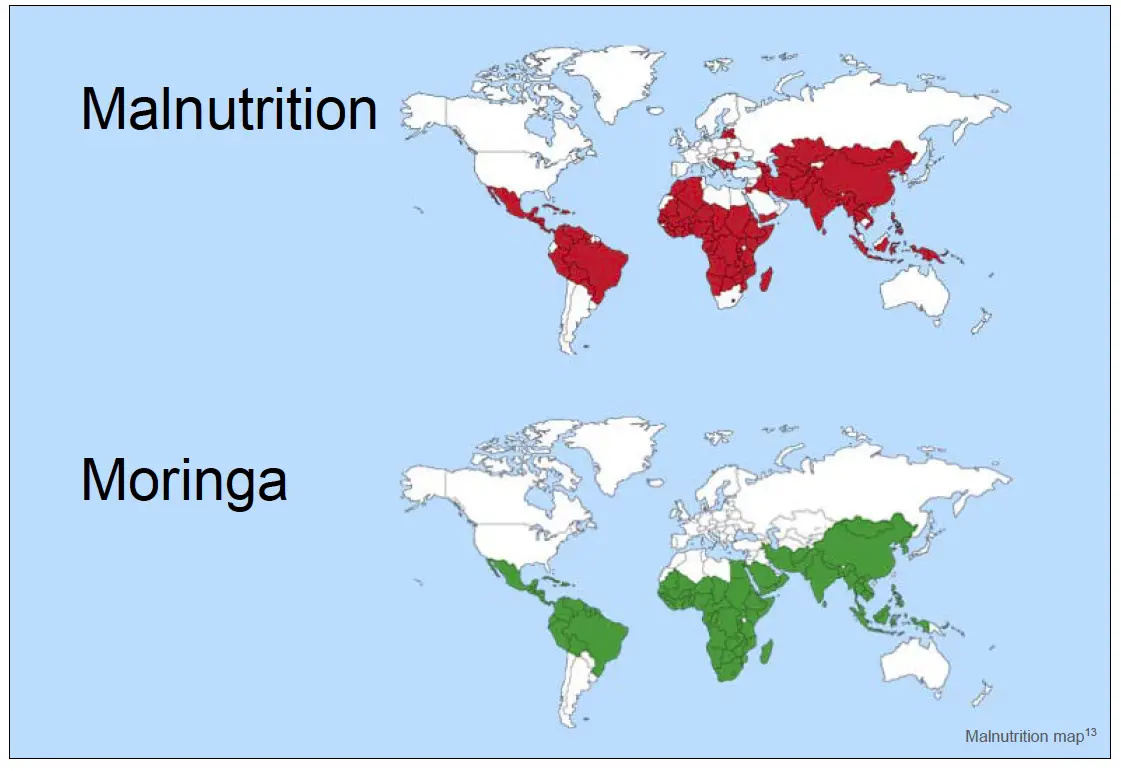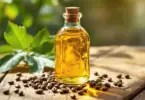By Ansel Oommen
Guest Writer for Wake Up World
The Moringa Tree, also known as the Drumstick tree is nearly entirely edible. It has many medicinal applications, can grow with little water, has multiple times the amount of nutrients as oranges, carrots, spinach and bananas, and grows extremely well in regions where of malnutrition. Could this tree solve the world’s food crisis?
In the foothills of the Himalayas in northern India, a certain tree has long graced the region with its miraculous fruit. Hanging from its wiry branches are clusters of ribbed pods, each a foot in length. These pods, or drumsticks, have attracted the attention of mankind for millennia, and for good reason.
While the aptly named Drumstick tree has a rather slender appearance, it is anything but frail. A tropical native, this prolific powerhouse has spread its roots across Africa, Asia, the Middle East, and the Caribbean. And now, it seems to have anchored itself in American soil.
[pro_ad_display_adzone id=”110028″]
Part of a new wave of exotic vegetables, Moringa oleifera (MO) is a botanical platypus. A member of the order Brassicales, it’s a distant relative of both the cabbage and papaya. Its roots taste so much like its cousin horseradish, that it’s earned the title ‘horseradish tree’. Its fruit, a popular Indian vegetable, looks like a cross between an okra and a pole bean with the flavor of asparagus. Its cooked flowers mimic mushrooms in taste, while its leaves hint at spinach and lettuce. Its immature seeds are used like peas and if fried when mature, resemble peanuts.
In fact, it’s hard to find a part of Moringa that isn’t edible. Even the bark is sometimes taken internally for diarrhea. But that doesn’t come as a surprise to the locals, who consider it a living pharmacy. Moringa has proven to be a multipurpose arsenal that dispenses some of the best secrets nature has to offer. For centuries, it has been used in Ayurvedic medicine to treat a host of ailments including anemia, bronchitis, tumors, scurvy, and skin infections.
Drought hardy and disease resistant, Moringa is a godsend during the dry season, when little food is available. The fresh leaves and branches serve as an excellent source of forage. The leaves offer a spectrum of nutrition, rich in vitamins A, B, and C, as well as protein, calcium, and iron. They are so nutritious in fact, that they contain more vitamin A than carrots, more vitamin C than oranges, more calcium than milk, more iron than spinach, more potassium than bananas, and more protein than either milk or eggs! A traditional item in pickles and curries, the raw leaves are also perfect for salads.
As a result, Moringa could play a key role as a wholesome food source in impoverished nations, where malnutrition is often rampant. The World Health Organization has stressed the importance of amino acids and protein for growing children. Luckily, Moringa leaves are rich in these nutrients, with the added benefit of omega-3 fatty acids and a host of protective phytochemicals.
A 2013 study published in the Journal of Food and Nutrition Sciences shows that, when Moringa is mixed in with different cereals, malnourished children regained normal weight and health status in 30-40 days, while the United Nations Industrial Development Organization (UNIDO) recipe for malnourished children took 80 days — double the difference.
Adds Nikolaus Foidl, a world leading agricultural researcher on Moringa.
“[It] is a very healthy satisfying food that meets all nutritive needs. It is cheap to produce, can be cooked or eaten raw, sold in the market, or dried as a powder to be sold over long distances.”
Foidl has been studying the tree for over a decade in conjunction with the University of Hohenheim in Stuttgart, Germany. He has traveled to many countries, including Senegal, Honduras, Guinea Bissau, and Argentina, promoting the miracle tree’s cultivation by working with the locals. In Nicaragua, he helped farmers utilize the leaf extract as a growth spray for other crops.
“Moringa leaves contain the growth factors gibberellin, kinetin, and some lower levels of auxin. We got up to a 25% increase in sugarcane and turnips, onions and radish.”
Such a bountiful increase should not be ignored, especially in areas where food shortage is an issue. Foidl, who has the financial support of the Austrian government, first came across the tree by accident. He recounted,
“By chance, I had a Jatropha plantation with rows of Moringa as windbreaks and the damn cows were always breaking down my fences to get to them. So I wondered, what is so special about this tree that the cows are willing to risk injury?”
That question has now led to a new understanding of Moringa’s multifaceted potential. As a vigorous hardy grower, it surprisingly does not require much water or soil nutrients once established. This makes it one of the most valuable tropical trees in terms of overall utility.
Like the leaves, the flowers too are edible when cooked, packed with calcium and potassium. As a bonus, they are not only incredibly fragrant, but also support native bee populations.
Moringa roots and bark, on the other hand, are used with caution. The bark contains the toxic chemicals moringinine and spirochin which can alter heart rate and blood pressure. However, they do show promise in the medical field. The inner flesh of the root is less toxic, and those of young plants are picked for a hot sauce base while the resin is added as a thickener. Interestingly, blue dye can be obtained from the wood, which is also used in paper production.
[pro_ad_display_adzone id=”110030″]
Hidden within the drumsticks are even more remarkable seeds. Loaded with protein, they also contain special non-toxic polypeptides that act as natural filters. When ground into powder and mixed with water, they cause sediments to clump together and settle out. Then when strained through a cloth, they provide cheap access to clean water. Amazingly, just two seeds are enough to purify a dirty liter.
“It has been widely used at the village level in Africa to transform river water into drinking water,” shared Foidl. “I had a project working with the seeds in a wastewater treatment plant in Nicaragua (wastewater from 4,000 people). It was very effective – about 99.5% separation of turbidity in 30 minutes.”
In turn, the seeds themselves yield a valuable yellow oil called ben oil. Sweet, clear, and odorless, it doesn’t spoil easily – perfect for perfumes, cosmetics, and lubrication. It has also found use in cooking due to its high levels of healthy unsaturated fats.
For such a versatile tree, it’s almost hard to believe that Moringa is easily grown via seeds or cuttings. Foidl remarked, “It grows virtually better than willow.”
From Seed to Tree: The Complete Guide to Growing Moringa
As agriculture becomes more expensive, managing the long-term productivity of the land is essential. Moringa solves this issue through a practice called high-density planting. The trees are grown closely together to increase the yield per given area, while at the same time reducing the need for herbicides. Because Moringa grows rapidly, it crowds out and suppresses neighboring weeds.
“The optimal density is 1 million plants per hectare (10 x 10cm spacing), where the losses of plants per cut are around 1% and the losses are compensated through vigorous sprouting,” explained Foidl. “Moringa is cut at a height of 15 to 25cm for vigorous regrowth.”

Left: Moringa just before harvest. Foidl either harvest at 35 days of growth or 75. Right: Moringa harvested on rotation.
This practice allows for cutting every 35 days, totaling 10 harvests per year. In fact, 120 tons of dry matter can be harvested per hectare a year, 10 times more than corn and several times more than soy. As a result, there is a constant supply of fresh food, with little need for storage.
Moringa is in a unique position to address the issues of hunger, malnutrition, poverty, and lack of clean water all at once, something no other plant can boast. It is even more valuable considering it is found widely throughout the tropics, in the regions where it is needed most, making this ancient tree a true modern day miracle.
References:
- Anwar F, Latif S, Ashraf M, Gilani AH. Moringa oleifera: a food plant with multiple medicinal uses. Phytotherapy Research. http://www.ncbi.nlm.nih.gov/pubmed/17089328
- Kurup PA, Rao PL. Antibiotic principle from Moringa pterygosperma. IV. The effect of addition of vitamins and amino acids on the anti-bacterial activity of pterygospermin. Indian Journal of Medical Research. http://www.ncbi.nlm.nih.gov/pubmed/13162511
- Abdull Razis AF, Ibrahim MD, Kntayya SB. Health benefits of Moringa oleifera. Asia Pacific Journal of Cancer Prevention. http://www.ncbi.nlm.nih.gov/pubmed/25374169
- Urbain Zongo, Steve Léonce Zoungrana , Aly Savadogo , Alfred S. Traoré. Nutritional and Clinical Rehabilitation of Severely Malnourished Children with Moringa oleifera Lam. Leaf Powder in Ouagadougou (Burkina Faso). Journal of Food and Nutrition Sciences
-
Oluwole S Ijarotimi, Oluwole A Adeoti, and Oluwaseun Ariyo. Comparative study on nutrient composition, phytochemical, and functional characteristics of raw, germinated, and fermented Moringa oleifera seed flour. Journal of Food and Nutrition Sciences, 2013. http://www.ncbi.nlm.nih.gov/pmc/articles/PMC3951542/
- Igwilo IO, Ezeonu FC, Ezekwesili-Ofili JO, Igwilo SN, Nsofor CI, Abdulsalami MS, Obi E. Anti-nutritional factors in the roots of a local cultivar of Moringa oleifera (Lam). Pakistan Journal of Biological Science. http://www.ncbi.nlm.nih.gov/pubmed/24783788
- Ndhlala AR, Mulaudzi R, Ncube B, Abdelgadir HA, du Plooy CP, Van Staden J. Antioxidant, antimicrobial and phytochemical variations in thirteen Moringa oleifera Lam. cultivars. Molecules (Basel, Switzerland). http://www.ncbi.nlm.nih.gov/pubmed/25045889
- Pinto CE, Farias DF, Carvalho AF, Oliveira JT, Pereira ML, Grangeiro TB, Freire JE, Viana DA, Vasconcelos IM. Food safety assessment of an antifungal protein from Moringa oleifera seeds in an agricultural biotechnology perspective. Food and Chemistry Toxicology. http://www.ncbi.nlm.nih.gov/pubmed/26032632
About the author:
Ansel Oommen is a garden writer, citizen scientist, and medical transcriptionist whose works have been published in magazines such as Atlas Obscura, Well Being Journal, and Entomology Today, among others. Discover more at www.behance.net/Ansel.
All images thanks to Nikolaus Foidl (whom the author interviewed for this article) apart from Moringa root, thanks to Crops for the Future.
[pro_ad_display_adzone id=”110027″]

